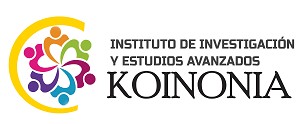CLIL in use: perceptions and experiences of English teachers in public schools
Resumen
This study analyzes the perceptions and experiences that English teachers who work This study analyzes the perceptions and experiences of English teachers working in public institutions in the province of El Oro about the CLIL methodology, from its knowledge to its application. We worked with a descriptive type of research. It was determined that CLIL is not widely known or used among English teachers in the province of El Oro, despite being included in the National English Curriculum, which could be due to the lack of adequate training. Participating teachers who reported applying CLIL in the classroom recognized the innovative nature of the methodology. Therefore, they recommend CLIL as the most appropriate methodology for teaching English, although considering adaptations that could improve it, both in the materials used and in the use of additional resources, especially technological tools.
Descargas
Citas
Argudo, J., Abad, M., Fajardo-Dack, T., & Cabrera, P. (2018). Analyzing a Pre-Service EFL program through the lenses of the CLIL approach at the University of Cuenca-Ecuador. LACLIL, 11(1), 65-86. doi:10.5294/laclil.2018.11.1.4
Attard-Montalto, S., Walter, L., Theodorou, M., & Chrysanthou, K. (2016). Guía CLIL. Retrieved from Languages.dk: Clil4U: http://www.cece-galicia.com/wp-content/uploads/2016/03/CLILBookES.pdf
Calderón Dávila, L. d. (2019). Content and Language Integrated Learning (CLIL) en la producción oral del idioma Inglés. Quito: Universidad Central del Ecuador.
Conan, C. M. (2013). The role of CLIL teachers. Bari. Retrieved from https://www.youtube.com/watch?v=doN8oLApaSU
Coyle, D. (2005). CLIL: Planning Tools for Teachers. University of Nottingham, School of Education, Nottingham. Retrieved from https://clilrb.ucoz.ru/_ld/0/29_CLILPlanningToo.pdf
Coyle, D., Hood, P., & Marsh, D. (2010). CLIL: Content and Language Integrated Learning. Cambridge: Cambridge University Press.
Dalton-Puffer, C. (2011). Content-and-Language Integrated Learning: From Practice to Principles? Annual Review of Applied Linguistics, 31, 182-204. doi:https://doi.org/10.1017/S0267190511000092
Durán-Martínez, R. (2018). Análisis comparativo de la percepción de los docentes sobre los programas bilingües en la Educación Primaria y Secundaria. Revista Complutense de Educación, 29(3), 865-888. doi:http://dx.doi.org/10.5209/RCED.54066
Loor-Zambrano, K. W., Almeida-Briones, X. A., González Reyes, S. D., Tomalá-de la Cruz, J. A., & Cevallos Salazar, J. E. (2019). Análisis de los problemas institucionales que inciden en la enseñanza del idioma Inglés en las Unidades Educativas Península De Santa Elena y Colegio Militar Eugenio Espejo [Analysis of the institutional problems affecting English language teaching in the Península De Santa Elena and Colegio Militar Eugenio Espejo Educational Units]. Ciencias Pedagógicas e Innovación, 46-54. http://dx.doi.org/10.26423/rcpi.v6i2.248
Marsh, D. (2012). Content an Language Integrated Learning (CLIL). A Development Trajectory. Córdoba: University of Córdoba.
McDougald, J. (2015). Teachers´ attitudes, perceptions and experiences in CLIL: A look at content and language. Colombian Applied Linguistic Journal, 17(1), 25-41. Retrieved from https://revistas.udistrital.edu.co/index.php/calj/article/view/7602
Mehisto, P., Marsh, D., & Frigols, M. J. (2008). Uncovering CLIL: Content and Language Integrated Learning in Bilingual and Multilingual Education. Oxford: Macmillan Education.
Ministerio de Educación del Ecuador. (2019). Currículo de los Niveles de Educación obligatoria. Subnivel Superior [Curriculum of the Compulsory Education Levels. Higher Sublevel]. https://bit.ly/3N0WkL8
Ortega-Auquilla, D. P., & Minchala-Buri, O. E. (2019). Explorando las aulas de clase de Inglés en Cañar: currículo, instrucción y aprendizaje [Exploring English classrooms in Cañar: curriculum, instruction and learning.]. Ciencia de Unemi, 12(30), 57-73. Retrieved from https://www.redalyc.org/journal/5826/582661249006/movil/
Pavón-Vázquez, V., Prieto Molina, M., & Ávila López, F. J. (2015). Teachers' and students' perceptions of promoting interaction through task-based activities in CLIL. Porta Linguarum, 75-91.
Porras-Loyola, D. (2013). Análisis de CLIL (Content Language Integrated Learning) como metodología para enseñar inglés como segunda lengua. Retrieved from https://reunir.unir.net/handle/123456789/1779
Verjano, R. (2017). Primary teacher´s perspectives on CLIL implementation in Mataró. Barcelona: UNIR.
Yavuz, A., Öztüfekçi, A., Ören, A., Kaplan, A., & Uzunkaya, C. Y. (2020). Teachers' CLIL perceptions and needs: a collective case study from Turkey. Shanlax International Journal of Education, 9(1), 92-103. doi: https://doi.org/10.34293/
Derechos de autor 2022 Jorge Enrique Villamarín-Guevara, Tammy Fajardo-Dack

Esta obra está bajo licencia internacional Creative Commons Reconocimiento-NoComercial-CompartirIgual 4.0.
CC BY-NC-SA : Esta licencia permite a los reutilizadores distribuir, remezclar, adaptar y construir sobre el material en cualquier medio o formato solo con fines no comerciales, y solo siempre y cuando se dé la atribución al creador. Si remezcla, adapta o construye sobre el material, debe licenciar el material modificado bajo términos idénticos.
OAI-PMH URL: https://cienciamatriarevista.org.ve/index.php/cm/oai














